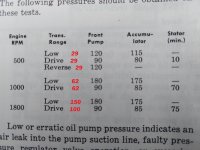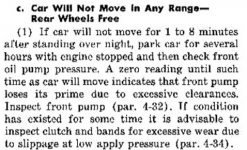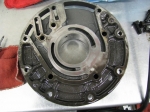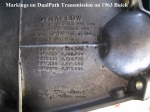Buickjoe1959
Newbie
Hello to all forum members
My name is Josef and I live in Munich Germany.
I have had my 1959 Buick for 30 years now, restored it completely and have enjoyed the car for 30 years.
Now I need some help from you specialists.
Unfortunately I have problems with my Dynaflow transmission.
The gearbox was overhauled some time ago.
The problem is that when I start the car and want to drive away, the Buick barely moves. In low position (1st gear) the Buick moves a little more, in D position I can hardly get away. It feels like the transmission is slipping. If I let the car run for a while and shift through the gears it gets better, as soon as I drive a few meters the transmission works again.
What could be the cause of this?
Thank you very much in advance
Joe
My name is Josef and I live in Munich Germany.
I have had my 1959 Buick for 30 years now, restored it completely and have enjoyed the car for 30 years.
Now I need some help from you specialists.
Unfortunately I have problems with my Dynaflow transmission.
The gearbox was overhauled some time ago.
The problem is that when I start the car and want to drive away, the Buick barely moves. In low position (1st gear) the Buick moves a little more, in D position I can hardly get away. It feels like the transmission is slipping. If I let the car run for a while and shift through the gears it gets better, as soon as I drive a few meters the transmission works again.
What could be the cause of this?
Thank you very much in advance
Joe






